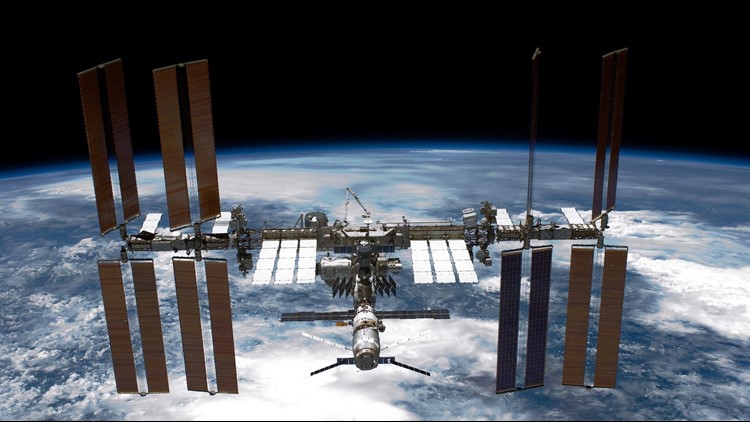Intrigue continues about what — or who — punctured a hole in a Russian spacecraft that caused a small but potentially serious loss of pressure aboard the International Space Station in late August.
In a statement Wednesday, NASA said two new crew members will launch to the outpost as planned next week, and that cosmonauts may perform a spacewalk next month to gather more information on the hole found in a Russian Soyuz spacecraft docked to the outpost.
Station crew members traced the hole to the Soyuz, and quickly patched it inside with gauze and epoxy, after ground teams detected a slight loss of station pressure on Aug. 29. Though NASA called the leak "minor" and said the six-person crew was never in danger, astronauts were concerned about the potential need for an emergency evacuation.
Referring only to Russian media reports, NASA's statement on Wednesday noted that Dmitry Rogozin, head of the Russian space agency, has said manufacturing defects weren't behind the problem.
That suggests the hole was "an isolated issue," NASA said, not one expected to reappear on the next Soyuz, which is scheduled to launch Oct. 11 from Kazakhstan with NASA's Nick Hague and cosmonaut Alexey Ovchinin.
If a person was responsible, investigators are not yet alleging an act of sabotage.
"This conclusion does not necessarily mean the hole was created intentionally or with mal-intent," NASA said. "NASA and Roscosmos are both investigating the incident to determine the cause."
Astronauts have said the 2-millimeter hole is a clean one that was "clearly man-made," not a jagged strike from a micrometeorite or space junk, though the joint investigation has not yet confirmed that.
Rogozin, according to news reports last month, initially refused to rule out the possibility that an astronaut, not a worker on the ground, might have drilled the hole.
NASA Administrator Jim Bridenstine will attend next week's Soyuz launch and plans to meet with Rogozin to discuss the highly sensitive matter. The space agency heads had an initial conversation about it by phone on Sept. 12.
Last month, NASA astronaut and Expedition 56 commander Drew Feustel told a reporter that he could "unequivocally say that the crew had nothing do with this," and praised the quick response by ground teams and his crew.
“I think it’s absolutely a shame and somewhat embarrassing that anybody is wasting any time talking about something that the crew was involved in,” he added.
Feustel on Wednesday turned over command of the station to European Space Agency astronaut Alexander Gerst of Germany. Early Thursday, Feustel will strap into another Soyuz — not the one where the hole was found — with NASA's Ricky Arnold and cosmonaut Oleg Artemyev for the ride home to Earth.
Since the retirement of NASA's space shuttle in 2011, Russia's Soyuz has offered the only ride for people to and from the station. NASA hopes to launch crews from Florida again within a yearon new Boeing and SpaceX capsules.



